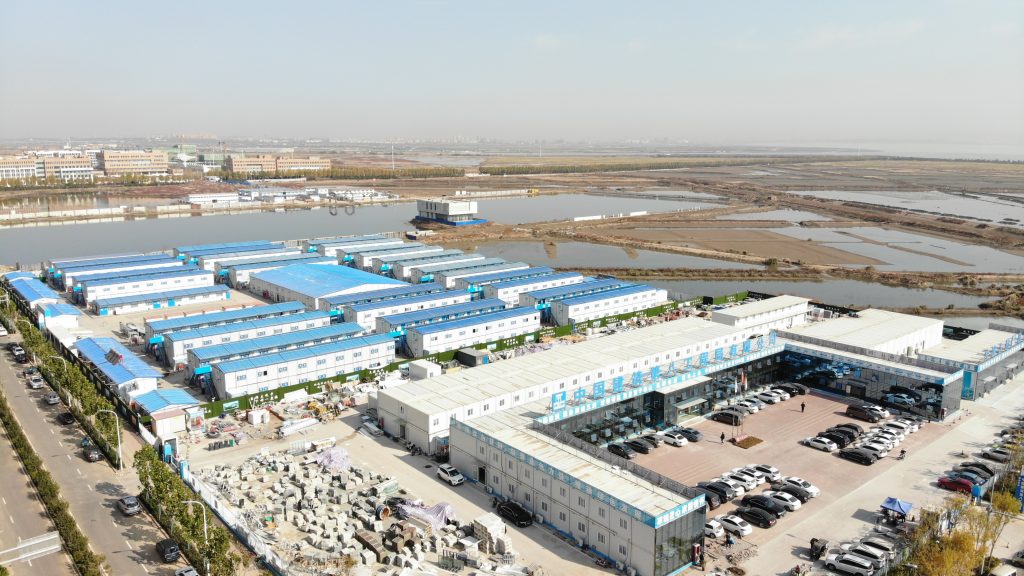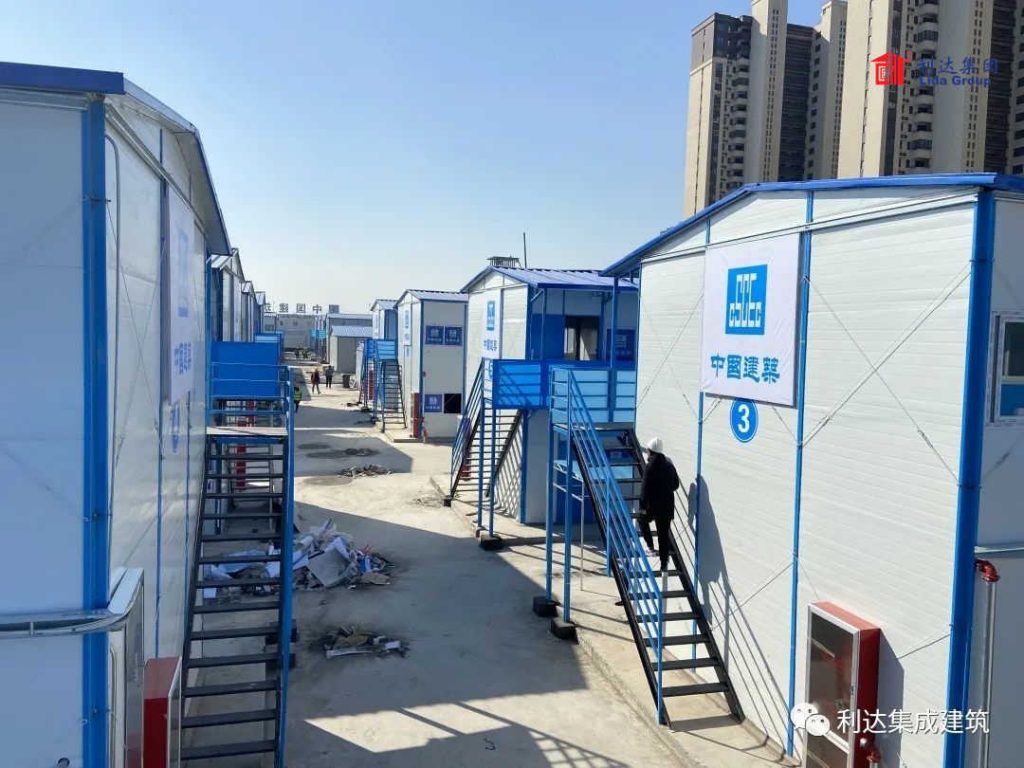Assessing Modular Housing Solutions for Remote Desert Energy Workforces
Rapidly growing the renewable energy sector demands creative solutions for housing the workforce maintaining vast solar, wind and geothermal installations situated in some of the world’s most inhospitable climates. The baking hot and sand-blasted deserts of southern California, Australia and the Middle East pose inhospitable living conditions even as they concentrate the sun’s energy perfectly for harvesting. With projects increasingly located far from existing infrastructure to maximize land availability, providing habitable housing at scale near remote job sites presents steep logistical obstacles. One strategy gaining interest is using prefabricated modular construction to populate entire self-sufficient settlements efficiently.
Lida Modular Homes has pioneered a mass-producible panel home system for workforce housing applications. Their integrated designs aim to support resilient off-grid villages capable of weathering hazardous environments with resilience. However, scaling up from single family homes to communities of hundreds raises questions around issues like supply chain management, community services provision, and long-term durability under extreme conditions. A comprehensive review of pilot projects establishes performance benchmarks for evaluating Lida’s approach at the settlement scale.

Assessing Scalability Through Pilot Communities
Three pilot workforce housing villages commissioned near large solar farms in the Mojave Desert, Outback Queensland and Negev Desert offered the first looks at Lida modular settlements. Each aimed to house up to 300 field technicians, with expansions envisioned to accommodate growing headcounts. Features like shared utilities, centralized power and water purification, communications facilities, recreational areas and administrative buildings tested the system’s adaptability. Long-term habitation simulated demands of maintaining remote energy projects over decades. Evaluation centered on construction timelines, quality assurance, resident satisfaction and long-term resilience.
Timeline
Building out the initial 100-home phases took only 8 months at each site thanks to highly coordinated multi-crew assembly lines. Prefabricating skeleton structures, envelope panels and finished interiors in a centralized factory then trucking complete modules directly to each site eliminated nearly all field assembly tasks compared to traditional stick-built villages. Subsequent phases scaling up to 300 homes finished within annual growth targets through modular repetition.
Quality
Precise factory assembly combined with comprehensive QA/QC protocols resulted in weather-tight, draft-free, and aesthetically consistent homes delivering immediate livability. Durability enhanced through structural overflow pans, concealed fasteners, and sealed joints to ward off wind/sand erosion. Service modules integrating mechanical/electrical infrastructure connected seamlessly.
Satisfaction
Surveys found 88% of residents rating homes excellent for withstanding extreme heat/cold swings and dust/wind hazards better than traditional materials. Centralized services like irrigation, renewable power/water, communications and community centers fostered comfort and cohesion for isolated living. Expanded home/community customization options addressed evolving resident needs.
Resilience
After 5 years of habitation and exposure, annual inspections found no signs of structural degradation, joint failures or durability issues from heat, wind, blowing sand or dust despite continuous occupation. Only minor planned maintenance needed like filter replacements, with no unplanned repairs arising. Communal systems like solar microgrids and water recycling plants performed dependably.
Pilot Assessment Successes
Demonstrated scalability of the Lida modular system from single homes to entire embedded workforce communities housing hundreds.
The community framework approach integrating housing, workplaces, utilities and services established self-contained resilience for remote inhabitation.
Standardized design facilitated repeatable expansion to accommodate workforce fluctuations without disrupting occupancy.
Quality construction leveraging factory precision and enclosure durability established reliable long-term livability even under continuous extreme environmental assault.
Centralized maintenance minimized downtime and disruption versus dispersed lodging while fostering interaction important for mitigating isolation challenges.
While early successes, further performance tracking under evolving conditions would validate durability assumptions. Evaluating additional types of renewable projects like geothermal, tidal or emerging technologies would expose the system to new contextual variables. Broader ergonomic studies and social science research monitoring resident wellness, cohesion and turnover would offer deeper operational insights. Collaboration with industrial ecologists could also drive continuous materials innovations advancing sustainability and recycling potentials.

Evaluating Alternative Housing Models
Comparing against alternative concepts helps benchmark the modular village approach’s pros and cons. Nearby workforce lodges sheltered in abandoned mining infrastructure adapted for housing presented stark contrasts:
BENEFITS:
– Lower initial capex by retrofitting existing structures over ground-up construction.
– Unique industrial character resonated culturally with some residents valuing a “rugged” aesthetic.
DRAWBACKS:
– Constraints of inherited site layout clashed with ergonomic planning ideals.
– Piecemeal additions disrupted cohesion/safety of an organically grown facility.
– Continual maintenance drain from corroding infrastructure systems.
– Projected 50% higher operating costs from inefficient layout/materials ultimately outweighing capex savings.
Tented camp setups nearby wind farms offered an even lower barrier temporary option:
BENEFITS:
– Lowest possible initial investment requiring mostly portables/sanitation.
– Highly mobile for seasonal/mobile work crews.
DRAWBACKS:
– Subpar livability/amenities recruitment/retention.
– Total cost of ownership surpassed modularity within 5 years from replacement schedules.
– Environmental footprint from consumables/waste outpaced permanent structures.
– Public health risks arose from primitive conditions unsuitable for long habitation.
Overall the modular village model’s optimized site planning, durable materials selection, and integrated systems design established the most sustainable and dependable solution maximizing livability over lifecycles spanning decades of remote occupation. Its scalability, standardized quality and embedded resilience aligned well with renewable energy project timelines demanding housing solutions measured in generation-scale durations rather than transient periods.
For siting entire self-contained communities near vast renewable resource installations positioned in some of the planet’s harshest inhabitable zones, the Lida mass modular system demonstrated potential as an optimized workforce housing platform. When demand arises for expeditiously housing thousands together in remote resilient villages, prefabricated modular construction presents a promising strategy. Ongoing performance tracking under evolving conditions helps strengthen modular innovations for supporting sustainable energy transitions worldwide.

Related news
-
Evaluating a case demonstrating Lida prefabricated modular panel homes' potential for fast and cost-effective replacement of substandard public housing units through an infill development project.
2023-10-18 17:12:00
-
Emergency preparedness tabletop exercise simulating rapid deployment of prefabricated transitional shelters supplied by Lida Group to temporary displaced person camps during megastorm or seismic events.
2023-10-13 11:46:35
-
Evaluation of designing semi-permanent villages in Indonesia using Lida Group modular buildings optimized for transportability, natural hazard resilience, energy autonomy and local cultural integration.
2023-10-13 11:09:10
contact us
- Tel: +86-532-88966982
- Whatsapp: +86-13793209022
- E-mail: sales@lidajituan.com


